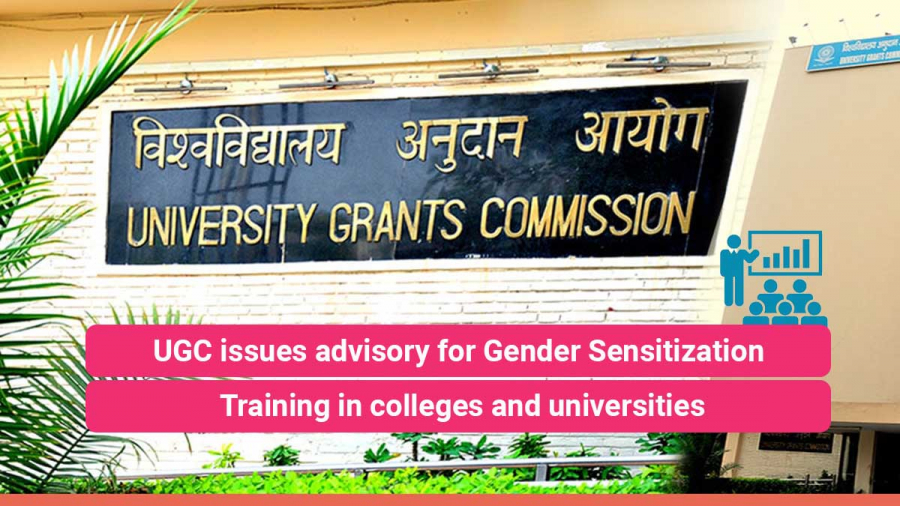
The University Grants Commission (UGC), which oversees universities in India, has issued notices to 54 private universities for not following its rules about Public Self-Disclosure. These rules, introduced in June 2024, require universities to publish important information on their websites, such as course details, fees, and faculty qualifications, and make it available to everyone without needing to log in. This action by the UGC is part of a larger effort to improve transparency, accountability, and trust in India's higher education system.
In this blog, we'll discuss why these notices are important, what the UGC's guidelines require, and why this step is so crucial for improving India's education system.
Understanding the UGC’s Public Self-Disclosure Guidelines
The Public Self-Disclosure guidelines require universities to share a lot of important information on their websites. This includes:
Academic Programs: Information about the courses, subjects, and programs the university offers.
Faculty Information: Details about the qualifications, experience, and roles of the teachers.
Fee Structures: Clear information about tuition fees, additional charges, and the total cost of studying.
Infrastructure Details: Information about the campus, libraries, labs, hostels, and other facilities available to students.
Research Activities: Details about the university's research projects, funding, and partnerships.
Governance: Information about how the university is run, including the leadership and decision-making bodies.
The goal of these rules is to make sure this information is easy to access for everyone. By providing this information openly, students, parents, and other stakeholders can better understand and evaluate the university. Without access to these details, it becomes difficult for students to know the true quality and value of the university.
Why Transparency Matters in Higher Education
Transparency is a cornerstone of a healthy and efficient educational system. For students and parents, transparency provides clarity on what to expect in terms of course offerings, faculty qualifications, fees, and facilities. It helps them make well-informed decisions about where to invest their time and money.
In recent years, there have been growing concerns about the quality of education offered by certain private universities in India. Some universities have been accused of not providing clear information on their courses, fees, or faculty, which raises questions about the quality of education they offer. Lack of transparency can lead to exploitation of students, as they may not have access to the full details before making important decisions. By requiring universities to disclose this information, the UGC is aiming to level the playing field and hold institutions accountable.
The Non-Compliance Issue: What Happened?
Despite multiple reminders via emails and online meetings, the 54 private universities did not follow the UGC's Public Self-Disclosure guidelines. These universities were expected to upload the required information on their official websites but failed to do so. Some of the universities did not update their websites regularly, while others kept crucial details hidden behind login barriers, which goes against the core principle of transparency.
In response to this non-compliance, the UGC has issued formal notices to these universities. The notices serve as a warning to these institutions, urging them to update their websites with all the necessary information. The UGC has made it clear that failure to comply with these directives could lead to further actions, including regulatory scrutiny and possible sanctions.
The Importance of UGC’s Actions
The UGC’s decision to issue notices to these universities is a critical step in the process of improving the quality and governance of private universities in India. This action is a reminder that higher education institutions must adhere to certain standards of transparency, accountability, and governance.
By requiring universities to publish comprehensive information on their websites, the UGC is ensuring that students have the information they need to make informed choices about their education. This initiative is also in line with the government's broader goal of improving education in India, making it more accessible, fair, and accountable.
The UGC has made it clear that continuing non-compliance could result in stricter actions, including the imposition of penalties or derecognition of the university. This could have severe consequences for any institution that fails to comply, as it may lose its credibility, reputation, and even its right to offer degrees.
Impact of Non-Compliance on Students and Stakeholders
The failure of private universities to comply with the Public Self-Disclosure guidelines can have several negative consequences:
For Students:
Lack of Transparency: Students may find it difficult to get clear and accurate information about programs, fees, and faculty. This makes it harder for them to choose the right university for their education.
Confusion About Costs: Without clear fee structures, students may be misled about the true cost of their education, which could result in financial strain later on.
Uncertainty About Quality: Without information about faculty qualifications, research activities, and infrastructure, students cannot accurately assess the quality of education they will receive.
For Parents:
Difficulty in Decision-Making: Parents, who play a major role in deciding which university their children attend, may struggle to make informed choices if universities do not provide clear information on their websites.
Financial Concerns: Hidden or unclear fee structures can cause financial uncertainty, leading to stress for both students and their families.
For Academic and Regulatory Bodies:
Challenges in Monitoring: Without full disclosure, regulatory bodies like the UGC find it difficult to monitor the operations of universities and ensure that they are adhering to quality standards.
Potential Loss of Trust: Lack of transparency could lead to a loss of trust in the higher education system. This is particularly concerning in a country like India, where access to quality education is a key factor in social mobility.
What Can Universities Do to Comply?
To align with the UGC guidelines and enhance transparency, universities should take the following steps:
1. Regularly Update Websites
Universities must ensure that their websites contain current and accurate information. This includes details about academic programs, faculty, research, fees, and infrastructure. Outdated information can mislead prospective students and tarnish the university’s reputation.
2. Implement User-Friendly Websites
Universities should design websites that are easy to navigate. Information should be clearly organized and easy to find, with no barriers like logins or complicated menus.
3. Maintain Open Communication with Stakeholders
Universities should engage with students, parents, faculty, and other stakeholders by providing clear channels of communication. Regular updates, emails, and transparent information will help build trust and credibility.
4. Comply with Regulatory Guidelines
Universities should closely follow all directives issued by regulatory bodies like the UGC to maintain their accreditation and reputation. This not only ensures compliance but also supports the overall improvement of the education system.
Looking Ahead: The Future of Transparency in Higher Education
The UGC’s actions are a significant step forward in creating a more transparent and accountable higher education system in India. As more universities comply with these guidelines, the overall quality of education will improve, and students will be able to make more informed decisions.
It is also essential for students, parents, and academic communities to actively engage with universities, ask questions, and demand transparency. With increased participation from all stakeholders, higher education institutions can continue to improve, ensuring that they are meeting the needs of students and preparing them for success in their future careers.
As more institutions follow the UGC’s guidelines and adopt transparent practices, India’s higher education system can become a model for accountability, fairness, and quality education.
Conclusion
The UGC's decision to send notices to 54 private universities is an important step toward making higher education more transparent and accountable. It reminds universities that they must share clear and accessible information with everyone involved. Transparency doesn't just mean following rules – it builds trust, ensures quality education, and helps students make better choices.
As private universities continue to grow in India, it’s important for them to follow these guidelines and meet the standards set by the UGC. This will not only help students but also improve the entire education system in India.





